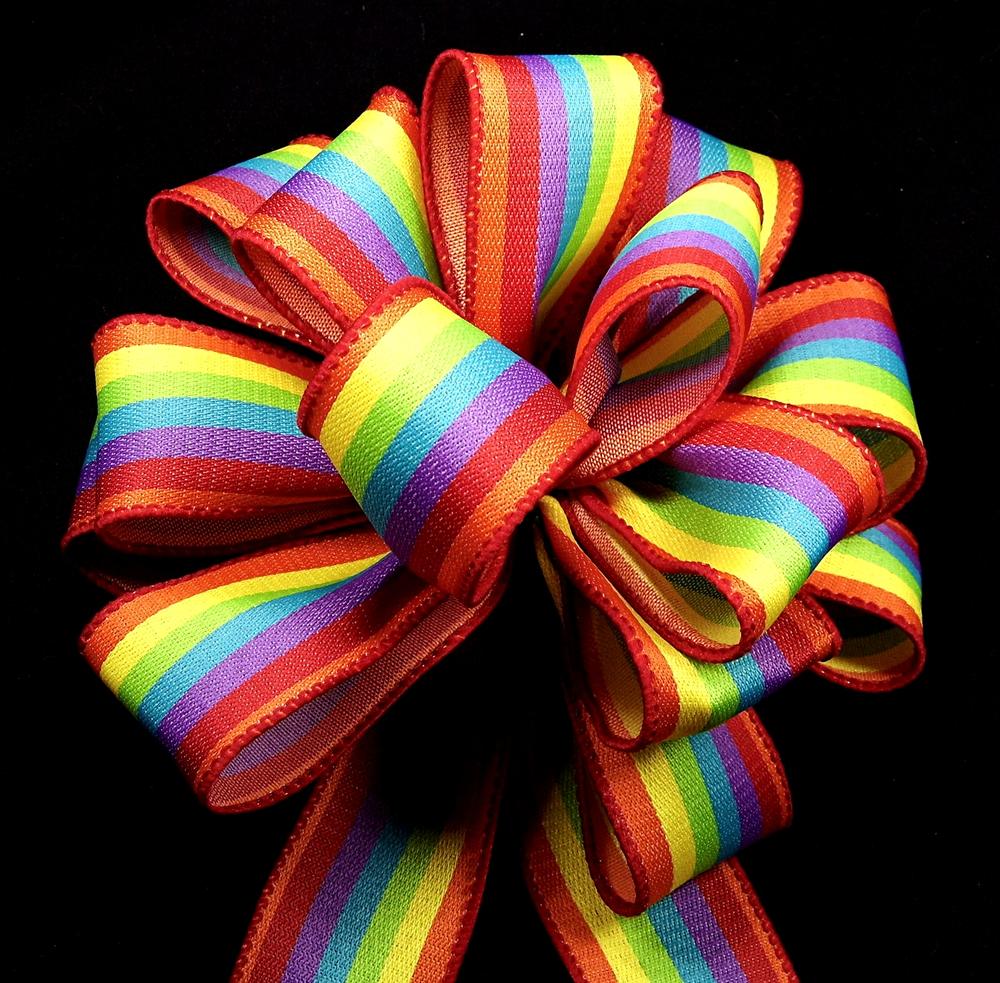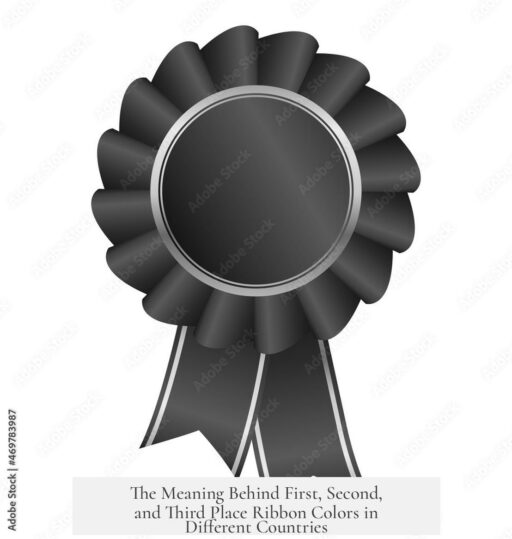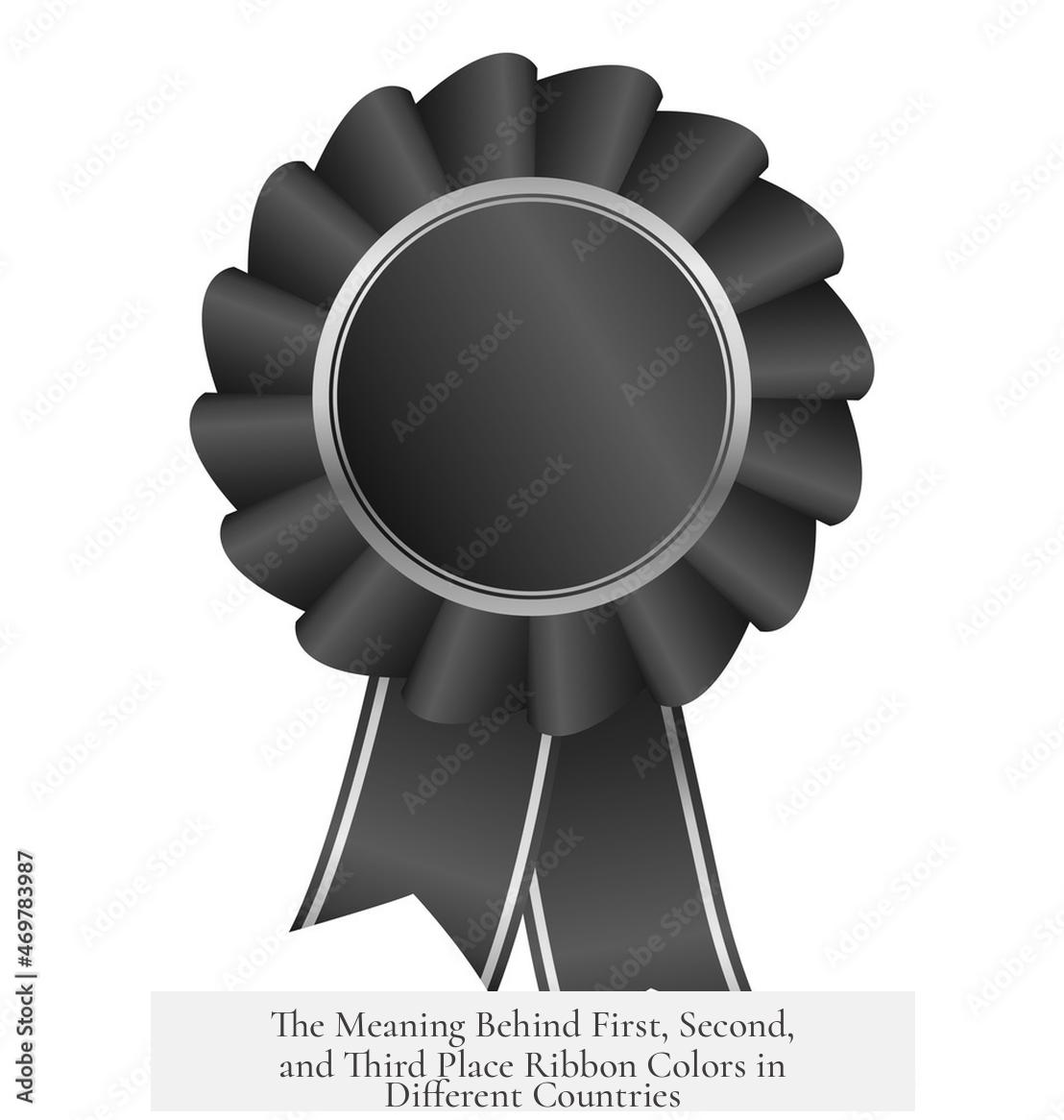First place ribbons are blue due to a historical association with “Le Cordon Bleu,” a prestigious French order known for its blue ribbon medal. This term later became linked to excellence, especially in cooking, and influenced the use of blue ribbons as a symbol of first place.
The origin traces back to a group of French knights who wore medals suspended from a blue ribbon. These knights earned a reputation for grand banquets and exceptional standards. Over time, “blue-ribbon” became an adjective that signified superior quality. In the 19th century, “Le Cordon Bleu” was adopted by a famous culinary school, solidifying the color’s association with top honors. The school remains renowned today as the training ground of chefs like Julia Child.
The use of red and white ribbons for second and third place, respectively, lacks a clearly documented origin. There is no definitive historical explanation for why red is commonly chosen for second place and white for third. The selection of these colors might be influenced by contrast and tradition but is not tied to a specific historical event or organization like the blue ribbon.
Color order and usage vary by country. For example, in Canada, the typical color sequence differs to red for first place, blue for second, and white for third. This shows that the ribbon colors are not universally standardized, and local customs influence them.
In countries whose flags do not use red, white, and blue, ribbon colors may differ. However, specific alternative color traditions are not well documented. The relationship between national flag colors and ribbon colors is not uniform globally. The UK does not necessarily follow the red, white, and blue sequence either, indicating variation among English-speaking countries.
- Blue ribbons for first place come from the French Le Cordon Bleu knights’ blue ribbon medal.
- There is no clear origin for red and white ribbons for second and third place.
- Ribbon color orders vary internationally—for example, Canada uses red for first place.
- Countries without red, white, and blue flags may have different traditions, but these are not well recorded.
Why Are 1st Place Ribbons Blue, 2nd Place Ribbons Red, and 3rd Place Ribbons White? And What About Countries Without Red, White, and Blue Flags?

So, why do we hand out blue ribbons for first place? It all traces back to the French Le Cordon Bleu knights and their legendary banquets. This tradition, wrapped in a bit of history and a dollop of French flair, is the origin story behind the most famous ribbon colors in competitions.
Let’s dive into how this color trio became the standard, and whether countries with different flag colors stick to this pattern or not.
The Blue Ribbon’s Chic French Roots
If you ever wondered why blue screams “champion” in contests, thank a group of French knights. These knights wore medals suspended from a distinctive blue ribbon – a symbol of their elite order. What earned them their fame? Absolutely stunning feasts that were the talk of the town. Their prestige made the term “blue ribbon” synonymous with top-tier excellence.
Fast forward to the 19th century, and Le Cordon Bleu formalized its culinary legacy by becoming the name of a prestigious cooking school, where culinary giants like Julia Child refined their skills. That blue ribbon went from nobility and banquets to cooking greatness.
So, “blue ribbon” took on a life of its own. It now represents excellence across many fields, not just cooking. Even awards for the fastest ocean liners once bore this mark of distinction. This rich history cements why blue ribbons are reserved for winners – they connect you to a tradition of high honor and mastery.
Red and White: The Mystery of Second and Third Place
Now, what about red and white ribbons for second and third places? Here, the story gets hazier. Surprisingly, no solid historical explanation exists for why red is second and white is third. It’s likely a result of tradition or practical choices rather than intentional symbolism tied to specific events or societies.
We do know red often grabs attention – it’s bold and eye-catching, making it a natural candidate for second place, slightly short of the blue glory. White is clean, simple, and perhaps, by elimination, fits neatly into third place. But that’s speculation, not documented history.
Wait, Does Every Country Follow This Red, White, and Blue Order?
Good question! And the answer is not straightforward.
Many countries with red, white, and blue flags—like the United States and France—follow this color order: blue for first, red for second, white for third. But even here, variations pop up. For example, some Canadians see the order as red first, then blue, then white. So even within red-white-blue countries, there’s no universal standard.
What about countries whose flags don’t feature these colors? Say, Japan with its red-and-white flag, or Brazil with green, yellow, and blue? The use of ribbons for awards tends to reflect local traditions, event organizers’ preferences, or international standards rather than flag colors.
In many places, sports and competitions borrow the blue, red, white color scheme because it’s widely recognized and easy to assign meaning – no need to reinvent the wheel. For example, Japan uses gold, silver, and bronze medals in many sports, mirroring the Olympic tradition more than the ribbon color scheme. So ribbons might not always follow the blue-red-white triad.
Why Stick to Blue, Red, and White Even When Flags Don’t Match?
Why do countries with different flags still use blue, red, and white ribbons? The answer lies in the power of international conventions. The Olympic Games helped make gold, silver, and bronze the global medal hierarchy. For ribbons, blue, red, and white offer contrast and clarity when handed out in events like fairs, school competitions, or dog shows.
Organizers want a color system that participants easily understand. Blue is already culturally loaded as “best.” Red catches the eye as a strong runner-up. White signifies a notable third place without conflicting with the other colors.
This color triad works well regardless of flag pride. In fact, when you think about it, these colors are almost “universal” in competition contexts because they neatly signify first, second, and third without the baggage of national symbolism.
So What’s the Practical Takeaway?
- Blue ribbons for first place tap into a centuries-old tradition linked to French knights and culinary excellence.
- Red and white for second and third place are probably just handy, high-contrast choices rather than symbol-loaded picks.
- In countries without red, white, and blue flags, the ribbon colors may vary or lean on internationally understood colors to avoid confusion.
- If you ever organize a competition and want to spice it up, try adopting a different color scheme to celebrate your culture or event theme!
Have You Ever Noticed Ribbon Colors at Events?
Next time you attend a school sports day, county fair, or local dog show, observe the ribbons carefully. Do they match this pattern? Are they switching it up? This little color code is more than color choice—it’s a slice of cultural heritage wrapped around a ribbon.
And if you’re wondering if changing from blue to, say, gold for first place ribbons will confuse folks—perhaps, but it might also start a fresh tradition!
Bonus Trivia
The famous cooking show icon Julia Child trained at the original Le Cordon Bleu school and wore the metaphorical blue ribbon in culinary excellence. So if blue ribbons taste like prestige, Julia’s kitchen was the ultimate test kitchen.
For those curious, explore the Le Cordon Bleu history page to see the full story unfold.
Final Thought
Ribbons are not just scraps of fabric. They are badges of honor steeped in centuries of tradition and meanings that cross borders, even as they flex to local customs. The blue for first place has an aristocratic and culinary pedigree, red and white fill second and third with flair, and countries worldwide continue to play with this colorful language of achievement.
Next time you hold a ribbon, remember—you’re holding a piece of history!




